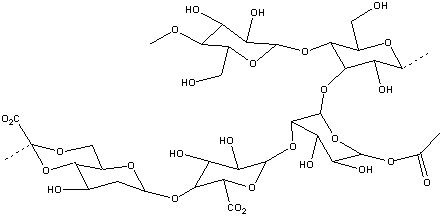Plants from the Sea
Seaweed, or algae,  is what
you see floating near the shoreline or lying on the beach. If you are
fortunate enough to go diving around a coral
reef, you'll find it there, too. Have you ever thought about what
seaweed is made of or what it could be used for? Seaweed contains ingredients
that are made up of natural
polymers and are used to produce many foods we eat and
products we use.
is what
you see floating near the shoreline or lying on the beach. If you are
fortunate enough to go diving around a coral
reef, you'll find it there, too. Have you ever thought about what
seaweed is made of or what it could be used for? Seaweed contains ingredients
that are made up of natural
polymers and are used to produce many foods we eat and
products we use.
Amazing to realize that, no? I was shocked to find this out, too!
>Other than the occasional crustacean feeding off decaying seaweed along the beach, many companies also need and use seaweed. Corporations that harvest seaweed tend to stick with specific kinds of algae because they have discovered, through experimentation, that certain kinds posses properties that are better than others. Laminaria is a brown kelp that is one of the most commonly used.
>The chemicals extracted from algae can be used in medical applications. For example, iodine found in Laminaria is used to prevent goiter.

Carrageenan is a polysaccharide that when processed can be dried and used in soups, salads and tea. Alginic acid is also a polysaccharide extracted from seaweed. It is made up of copolymers with some natural fiber mixed in. Alginic acid is used to make seasonings such as soy sauce and various spices.
 Alginic acid also functions as a stabilizing or
thickening agent in food products and in paints. Another thickening agent is a polymer called Xanthan
Gum, which is found in many common packaged foods.
Alginic acid also functions as a stabilizing or
thickening agent in food products and in paints. Another thickening agent is a polymer called Xanthan
Gum, which is found in many common packaged foods.
Xanthan gum looks like the structure below; to see a bigger version, go here.

Both alginic acid and xanthan gum are used in paints, film, products such as toothpaste and jello, drinks such as chocolate milk, and food such as ice cream.
But don't let that change how you feel about eating ice cream or drinking chocolate milk. After all, they wouldn't be as thick and creamy if it weren't for these polymers.